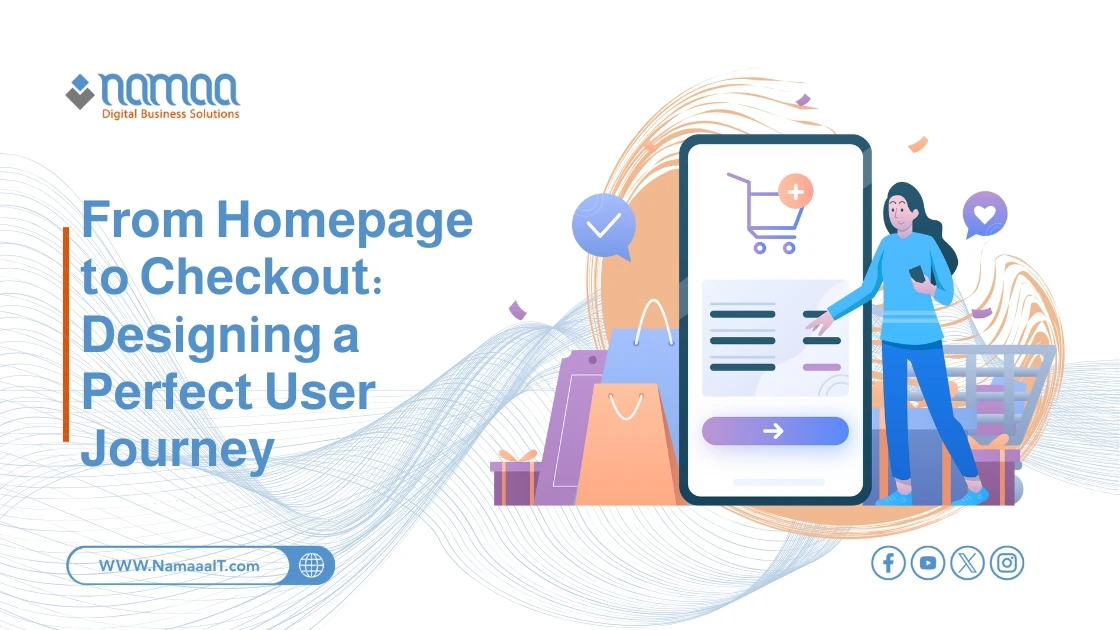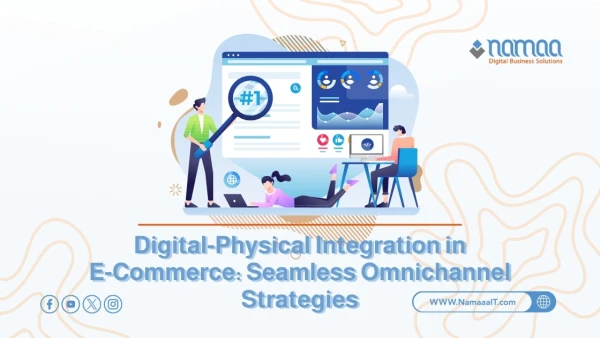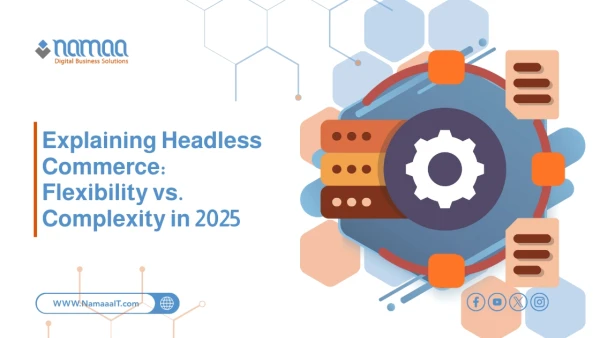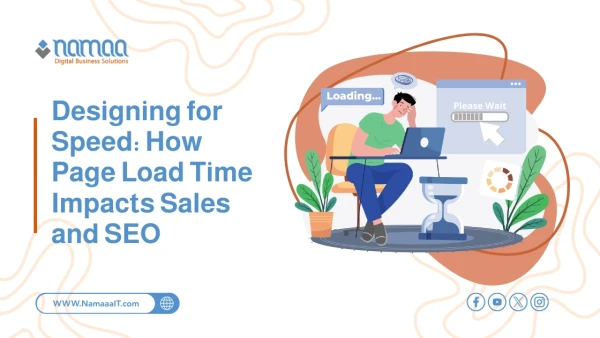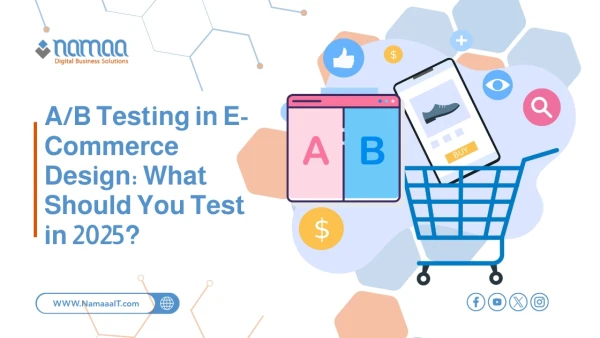Designing a seamless user journey from the homepage to checkout is a critical factor in the success of any e-commerce store. If the user experience isn’t clear and easy, many visitors will abandon the process midway without making a purchase. The goal of this journey is simple: to guide users from the moment they enter the site until they complete a transaction, with the fewest possible steps and no obstacles.
What is the User Journey?
The user journey is the complete path a potential customer takes from the moment they discover your website or product to the final decision—whether that’s making a purchase, signing up, or performing a specific action. This journey doesn’t happen randomly; it's shaped by how users interact with various touchpoints on your website—like the homepage, product pages, filters, shopping cart, and checkout.
Understanding this path in detail helps businesses craft user experiences that increase conversion rates and reduce abandonment or hesitation. Importantly, user journeys are not one-size-fits-all. They vary depending on the user’s intent, behavior, and entry source. For instance, someone arriving from a paid ad will behave differently than someone coming through organic search or a referral. That’s why effective journey design requires continuous analysis and deep understanding of user behavior.
The main goal of designing a user journey is to reduce friction, clarify steps, and deliver value at every stage. If users feel confused or face obstacles when navigating from one step to another, they’re likely to drop off before completing their goal. So, an effective journey means putting yourself in the user’s shoes and removing anything that could block their progress. It’s not just about visual design—it’s about creating a logical, guided flow that directs visitors step by step toward your intended action. This journey forms the foundation of a successful digital experience.
How Does User Experience Affect Conversion Rates?
User experience (UX) is the key factor in determining whether a visitor becomes a customer. Every moment spent on your site either builds or erodes trust. Poor UX—like slow load times, unresponsive design, or unclear content—can drive users away before they take any action. On the other hand, a smooth and intuitive experience results in longer visits, more engagement, and higher conversion rates.
Conversions don’t happen by chance. When page elements are clearly designed, buttons stand out, and the content is persuasive, users feel confident progressing through the steps. Smart design reduces cognitive load—this aligns with the “Don’t Make Me Think” principle in web design, which promotes smooth navigation and increases the likelihood of users completing their intended actions.
Small details can make a big difference. A vague error message, a broken button, or a page that’s not mobile-friendly might seem minor but can cost you a sale. In contrast, a polished experience signals reliability and builds trust, which leads users to follow through. That’s why improving UX directly boosts conversion rates—it’s worth the investment in design, testing, and ongoing optimization.
Learn more: How to Improve Page Load Speed
How to Design the Perfect User Journey
Creating a perfect user journey isn’t accidental. It’s the result of deep insight into user behavior, needs, and expectations, translated into a seamless digital experience from start to finish. Here are the key steps to designing this journey with a practical, conversion-focused approach:
1. Analyze User Behavior & Define Objectives
Start with data. Who is your user? Where are they coming from? What are they looking for? Use digital analytics tools like Google Analytics, heatmaps, and satisfaction surveys to understand behavior.
Then, define your goal: Do you want the user to make a purchase? Download an app? Subscribe? Everything else builds from this core objective.
2. Map the Current Journey
Document the existing user path—from entry point (e.g., homepage, ad, external link) to the final action (checkout or another goal).
Identify friction points like unnecessary steps, missing information, or confusing layouts. Your goal is to see the journey from the user's perspective—not the business owner’s.
3. Simplify Structure & Navigation
Users should never feel lost. Clear and intuitive navigation is crucial. Use accurate labels, streamlined menus, and layouts that highlight important elements without clutter.
Every page should naturally lead to the next. If users have to think hard about what to do next, you risk losing them. Each step should feel logical, expected, and obstacle-free.
4. Optimize the Homepage
The homepage is the most common starting point and forms the first impression. It should clearly communicate what your website offers and why it matters.
Essential elements include: a clear headline, prominent call to action (CTA), images or videos that explain your service/product, and easy-to-navigate links to key pages. Avoid overwhelming users—focus on the core message.
5. Product or Service Pages
Once on a product or service page, users need clear, digestible information. Use simple language, high-quality visuals, customer reviews, and comparisons when necessary.
The more users understand and trust the product, the more likely they are to move forward. Strong CTAs help guide the next step—don’t leave users guessing.
6. Improve the Shopping Cart Page
Many users add items to their cart but don’t complete the purchase. To reduce cart abandonment, make the cart page clear, editable, and filled with key info (final price, shipping fees, delivery time).
Add trust elements like return policies, security assurances, and multiple payment options. Ensure the “Checkout” button is prominent and intuitive.
7. Streamline the Checkout Process
This is the make-or-break stage. The fewer the steps, the higher the completion rate.
Request only necessary info, offer multiple payment methods, and allow users to review orders before confirming. Live support (like chatbots) can help resolve last-minute issues.
Learn more: A/B Testing in E-Commerce UX
8. Ensure Responsive Design
Most users browse on mobile. A non-responsive site loses over half its potential users.
User journeys must adapt to all screen sizes and deliver a consistent experience. Interactive elements, menus, and text should be mobile-friendly, just as they are on desktop.
9. Perform Continuous User Testing
You can’t improve what you don’t measure. Run A/B tests and real-user experiments regularly. Test small changes—like button colors, step order, or headline wording.
These tests offer actionable insights that drive data-based decisions. The perfect journey evolves with time and user feedback.
10. Use Feedback to Improve the Journey
Listen to your users. Survey results, product reviews, or even support emails provide rich insights into what’s working and what isn’t.
Create feedback loops post-purchase to ask users about ease of navigation, clarity of information, and overall experience. These insights often outperform guesswork.
11. Build Trust at Every Stage
Trust isn't built only at the end—it starts from the first moment. Use trust badges, user reviews, security info, and return guarantees on every page of the journey.
Each trust signal increases the likelihood of conversion. If a visitor feels secure, they’re more willing to provide personal details or complete a payment.
12. Personalize the Journey by User Type
A new visitor isn’t the same as a returning user. Tailor experiences based on user type—via personalized greetings, relevant offers, or custom content.
Use cookies or behavioral analytics tools to achieve this. Personalization makes the journey more relevant and more likely to convert.
The Ideal User Journey is Ongoing
It’s not a one-time setup. A successful user journey is a continuous process of analysis, testing, and refinement. Each stage should have a clear purpose, be designed with the user in mind, and be tested for effectiveness.
In the end, a successful website makes it easy for the user to say “Yes”—yes to purchase, sign-up, or engagement. That’s only possible when every step of the journey is intentional, thoughtful, and smooth.
Summary:
✅ Understanding user behavior is critical: Behavioral data analysis can improve conversion rates by up to 50% when used to enhance UX.
✅ Simplified navigation reduces bounce rates: Streamlined menus and well-organized pages lower bounce rates by 20% or more.
✅ Clear homepage messaging increases engagement: A direct, focused homepage message can boost CTA clicks by 30–40%.
✅ Fewer checkout steps = more conversions: Reducing checkout from 5 steps to 2 can increase order completion rates by up to 35%.
✅ Mobile optimization is essential: Over 60% of users browse on mobile, and non-responsive sites lose up to 53% of potential users.
✅ Ongoing testing boosts performance: Regular A/B testing improves conversion rates by 15–25% across most sites.
✅ Trust at every stage increases loyalty: Security icons and user reviews can increase purchase button clicks by up to 42%.

